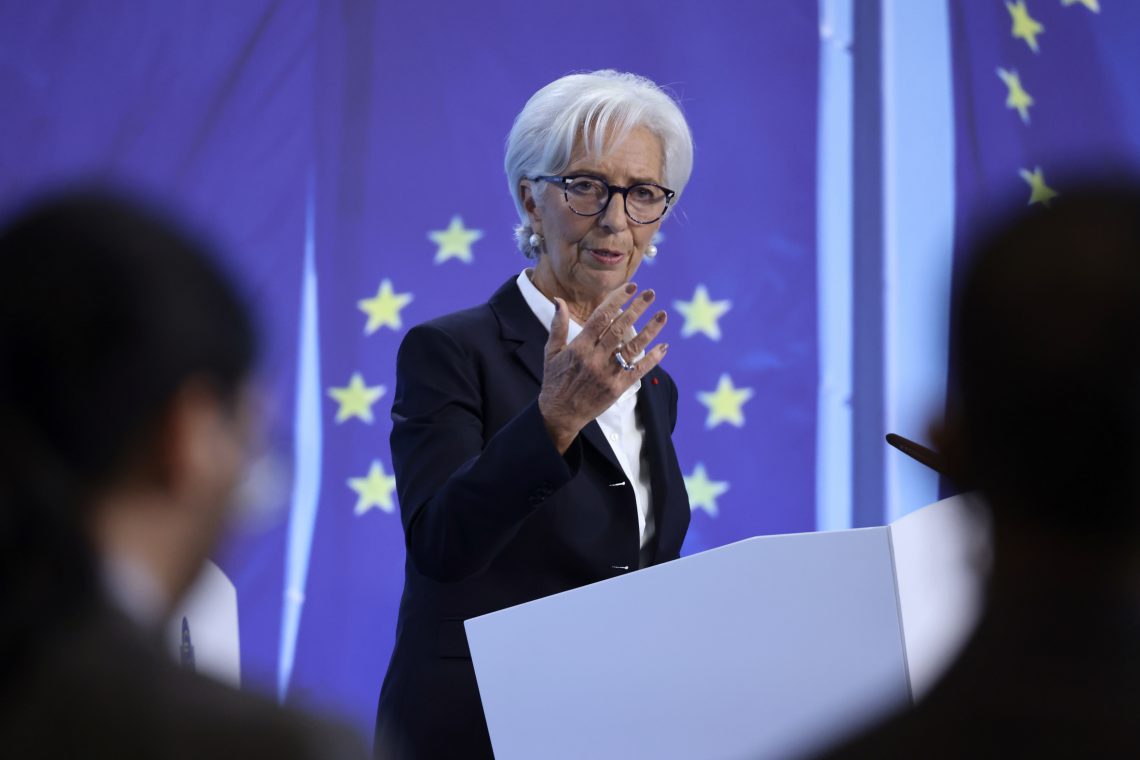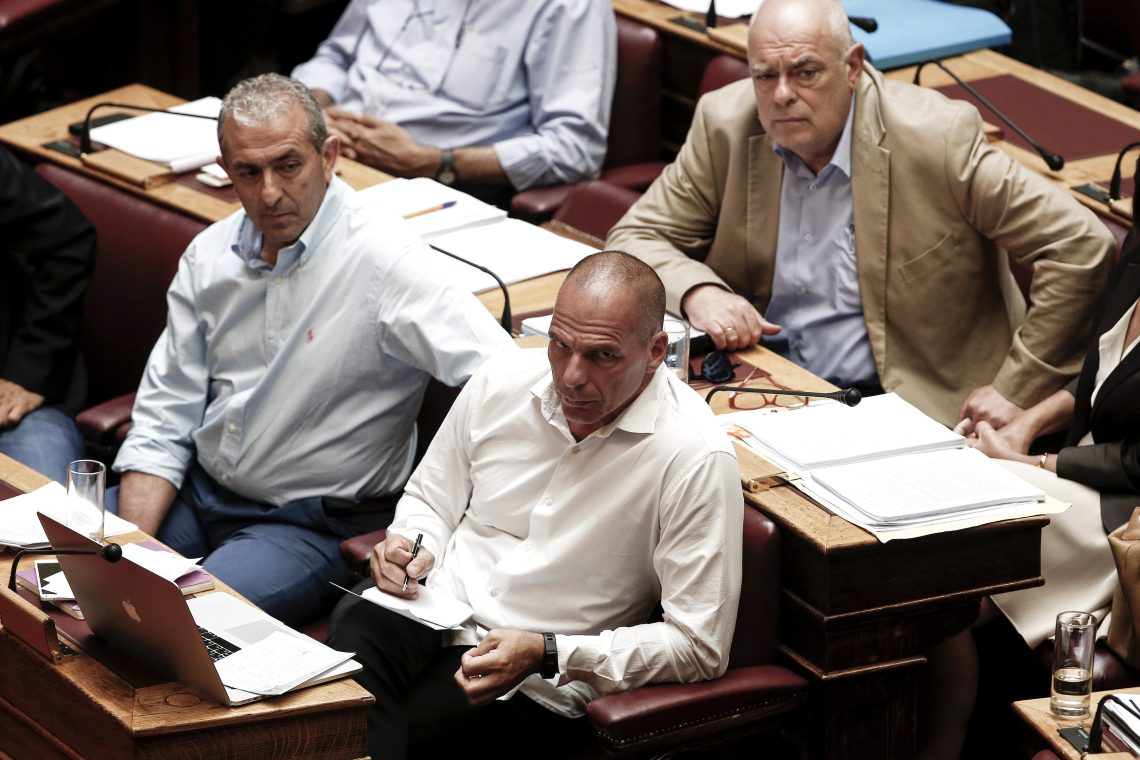Europe’s ever closer disunion
Two decades into the European Union’s quest for economic integration, eurozone members seem more divided than ever.

In a nutshell
- The eurozone has not yet lived up to the visions of its architects
- The European Central Bank has reinvented itself to deal with successive crises
- An era of ‘two-speed’ monetary policy may be beginning
“In retrospect, it was as if the architecture of the euro was designed to cause maximum divergence.”
This remark, made earlier this year by former Greek Finance Minister Yanis Varoufakis, does not merely express the disillusion of a protagonist involved in the torturous resolution of the 2009-2017 Greek debt debacle. It resonates with what many Europeans, including policymakers, have felt for a long time. Is their concern justified?
Two decades ago, the Economic and Monetary Union (EMU) seemed like a historic accomplishment, promising a future of peace and prosperity. It was supposed to be the first major step toward what the European Union’s founding treaties called an “ever closer union.”
We are far from that today. The “quantum leap” in integration touted for years by EU leaders has yet to materialize. Eurozone countries seem more divided than ever, and they no longer hesitate to publicly reveal their divisions, even in front of the world’s autocracies.
Great divide
The cascade of crises in Europe over the past 15 years has surely put a strain on intergovernmental collaboration. Paradoxically, the intense cooperation among EU member countries during such demanding times may have contributed to tearing them apart.
According to American political scientist Peter Hall, the European sovereign debt crisis is a case in point. He notes that between 2010 and 2015, EU heads of government met 54 times before agreeing to costly long-term rescue packages for Greece, Ireland and Portugal, and a credit line for Spain. Such a degree of intergovernmental consultation and coordination had been unprecedented in Europe.
But negotiations were so bitter that they ended up creating a deep rift between the eurozone’s south and its north. Not without resentment, Spanish economist Angel Ubide once described the divide between “creditors” and “debtors” as one between “those who dictate what others should do and those who should obey the command, creating first- and second-category countries.”
At the time, observers from southern European nations were also irritated by the prevailing EU rhetoric in terms of “core” and “periphery.” For many, that terminology seemed to convey the same negative connotations usually associated with stereotypical distinctions like “rich and poor,” “developed and underdeveloped,” “prudent and profligate,” or worse, “hardworking and lazy.”
Bad blood
In the south, the crisis revived a general mistrust in both national and European authorities – and, perhaps more worrying, a deep anti-German sentiment. Berlin was increasingly seen as the dominant power within the EMU and, as such, the driving force behind the painful bailout deals that forced years of hardship and austerity onto vulnerable populations.
Things got nastier when an already degraded political discourse gave way to insults and threats on both sides. In 2015, some members of Greece’s then-governing party Syriza began branding high-ranked German politicians as “Nazis.” Two years later, Dutch finance minister and then-president of the Eurogroup, Jeroen Djisselbloem, triggered outrage by insinuating that southern member states waste money on “women and alcohol” and then “ask for help.”
Paradoxically, the intense cooperation among EU member countries during recent crises may have helped drive them apart.
When the global pandemic broke out in 2020, Wopke Hoekstra, the Dutch finance minister succeeding Mr. Djisselbloem, reopened these wounds during a shrill debate over whether the EU should issue so-called “corona bonds” (a joint debt instrument combining securities from different eurozone countries). He reportedly demanded that Brussels “investigate” why some member states persistently lacked the financial room to maneuver that would allow them to manage the crisis effectively – a request that Portuguese Prime Minister Antonio Costa denounced as “repugnant.”
Disrespectful behavior and verbal excesses by political leaders can do real harm. By reinforcing crude and unfounded stereotypes, they contribute to anger and hostility among European citizens and ultimately undermine democracy – hardly a way to pursue the EMU founders’ goal of “convergence.”
Blame it on the system
After the crisis, the north and the south continued to blame each other for many of the eurozone’s problems. There were few at the time who, like Belgian economist Paul de Grauwe, saw the responsibilities for the euro debacle and the subsequent polarization as shared by both the EU’s north and south
What about the case that it was the fault of neither party? That seems to be the position of Yanis Varoufakis today. Like many politicians of his generation, he now prefers to put the blame on the “system” – i.e., the “architecture of the euro” – rather than on individual countries. The Nobel Prize-winning economist Joseph Stiglitz was one of the first to make that case. In his 2016 book, “The Euro: How a Common Currency Threatens the Future of Europe,” he called the project “a system almost designed to fail.”
In the years since, the EMU’s architecture has been copiously criticized. Its two foundational pillars – a single monetary policy, and a set of coordinated national fiscal policies – have been decried as too minimalist, at best.
The first pillar counts on a strong and independent European Central Bank, whose sole mandate is to protect the value of the single currency. It is reinforced by the Maastricht Treaty’s “no bailout clause,” forbidding the ECB from buying government debt. The founders wanted to ensure the ECB could not give in to pressure to conduct monetary policy in a way that helps eurozone governments liquidate their debts.
An era of two-speed monetary policy in Europe may be beginning: tightening in the north and further easing in the south.
The second pillar relies on market discipline, as well as a set of common rules limiting government deficits and public debt levels to 3 percent and 60 percent of gross domestic product, respectively. Each was supposed to play its own role in creating incentives for governments to be fiscally responsible.
However, the European debt crisis revealed that skittish markets can react dangerously when it comes to sanctioning irresponsible sovereigns. As for the fiscal rules established by the EU’s Stability and Growth Pact, they have proven hard to implement. Poorly designed, they were never able to cope with the profound differences in member states’ economic, political and institutional structures. They were suspended in March 2020 for an indeterminate period.
Illusion of convergence
Critics say the EMU works on the misleading assumption that the euro, associated with United States-style liberalized markets and a German-style institutional framework, would set in motion a “smooth process of convergence” between Europe’s northern “core” and its southern “periphery.” In reality, the argument goes, the EMU was conceived as a club favoring the strong countries, with the ECB serving as their ally.
Detractors also complain that, for architects of the euro, sharing a single currency should not entail transfers between member states. As Peter Hall has pointed out, the EMU established “monetary solidarity without any corresponding foundation of social solidarity.”

That shortfall may explain for example why, after years of negotiations, the Banking Union could still not be completed. This summer, the plan to create a European Deposit Insurance Scheme was yet again put on ice. Northern eurozone countries, led by Germany, refuse to intervene if Greek, Italian, Portuguese or Spanish banks fail and their customers must be made whole. Yet a robust Banking Union would be a cornerstone for preventing and managing future shocks in the eurozone.
For many, one of the EMU’s most serious failures is that its framework virtually overlooked the issues of risk sharing and crisis management. At the same time, it stripped national governments from primary adjustment mechanisms, such as interest and exchange rates. It also deprived the ECB of the tools available to most central banks to ward off speculative attacks in sovereign bond markets.
Debt monetization
To cope with the incessant sequence of economic shocks hitting Europe over the last two and a half decades, the ECB had to constantly reinvent itself. So-called “unconventional” monetary policy instruments have become a permanent component of its impressive toolkit. Most consist in doing precisely what the Treaty forbids: buying government debt.
In recent times, the ECB turned into a compulsive buyer, notably of structurally weak debt issued by southern member states. A pattern is emerging, which might well reshape the future of the eurozone.
As Spanish economist Daniel Lacalle recalls, Italy and Spain are the biggest beneficiaries of the ultra-loose monetary policy pursued by the central bank for years. During the pandemic, the ECB systematically bought all the net debt they issued. They also received the largest share by far of the NextGenerationEU Covid-19 recovery package.
Now that its main bond-buying schemes have expired, the ECB reportedly continues to buy these nations’ bonds, as well as those of Portugal and Greece, with the proceeds it receives from the reinvestment of German, French and Dutch debt.
Moreover, a new policy tool dubbed the Transmission Protection Instrument will allow the institution to make further large-scale purchases of southern debt, in the case of “unwarranted, disorderly market dynamics.” The stated purpose is to cap sovereign bond yield spreads to avoid “market fragmentation.”
For years, the ECB had also supported the eurozone’s south by implementing negative interest rates, even though this fueled massive asset bubbles in the north. Because of soaring inflation in Europe, it has recently had to raise interest rates. Shielding debt-stricken governments from the potentially disastrous effects of these rate hikes on borrowing costs is becoming a new priority.
Fiscal dominance
We may be at the beginning of an era of two-speed monetary policy in Europe: tightening in the north, where debt is under control, and further easing in the south, where it is not. If so, the cracks in the EMU’s facade might be getting even deeper.
Whatever the challenges facing monetary policy, everything now seems to revolve around intergovernmental transfers. And yet, recessions worsen, badly needed public investments are not made, and debt continues to balloon in the protected countries.
Ironically, those countries complain about the ECB’s every move. According to the Spanish economist Mr. Lacalle, the recent rate hikes – still far too moderate to curb inflation – were dubbed “monetary terrorism” by Spain’s socialist and left-wing populist governing coalition. Instead of making the most of it, the Pedro Sanchez-Podemos government prefers to squander generous ECB support on politically motivated spending – on top of that, Mr. Lacalle writes, “biting the hand that feeds it.”
Chasing off the shadow of fiscal dominance was a priority for the EMU’s architects. It now appears to have gotten in through the backdoor.
Mr. Varoufakis, like many others, believes that the EMU – or rather, the principles of fiscal self-discipline on which it is grounded – are responsible for the fault line between north and south. What if it was the very erosion of these principles that exacerbated the problem? In either case, the future of the euro may be at stake.








